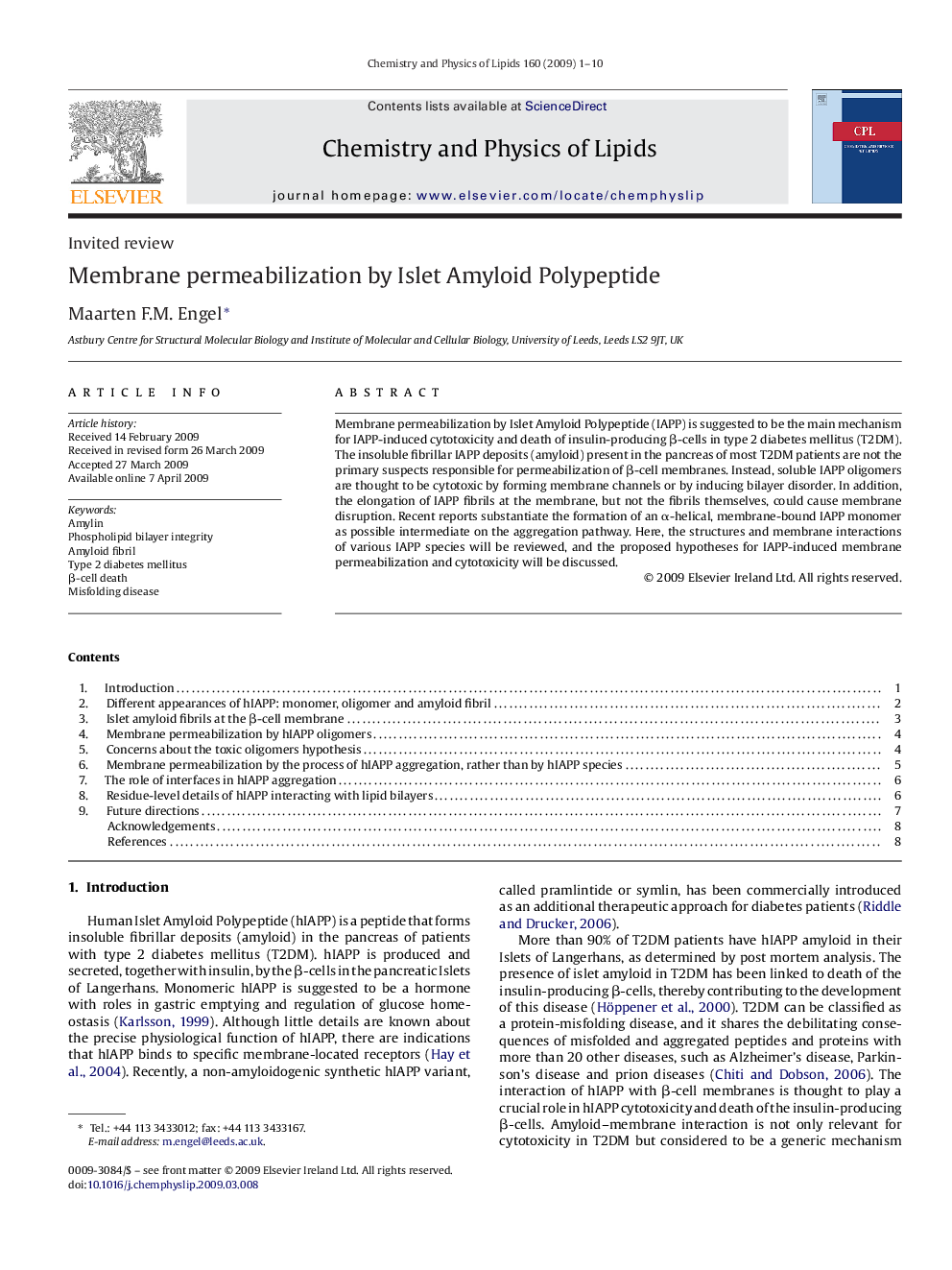| Article ID | Journal | Published Year | Pages | File Type |
|---|---|---|---|---|
| 1252377 | Chemistry and Physics of Lipids | 2009 | 10 Pages |
Membrane permeabilization by Islet Amyloid Polypeptide (IAPP) is suggested to be the main mechanism for IAPP-induced cytotoxicity and death of insulin-producing β-cells in type 2 diabetes mellitus (T2DM). The insoluble fibrillar IAPP deposits (amyloid) present in the pancreas of most T2DM patients are not the primary suspects responsible for permeabilization of β-cell membranes. Instead, soluble IAPP oligomers are thought to be cytotoxic by forming membrane channels or by inducing bilayer disorder. In addition, the elongation of IAPP fibrils at the membrane, but not the fibrils themselves, could cause membrane disruption. Recent reports substantiate the formation of an α-helical, membrane-bound IAPP monomer as possible intermediate on the aggregation pathway. Here, the structures and membrane interactions of various IAPP species will be reviewed, and the proposed hypotheses for IAPP-induced membrane permeabilization and cytotoxicity will be discussed.
